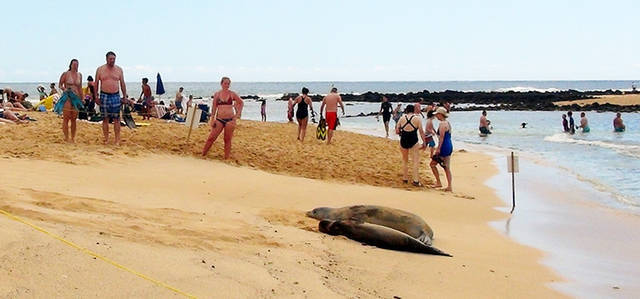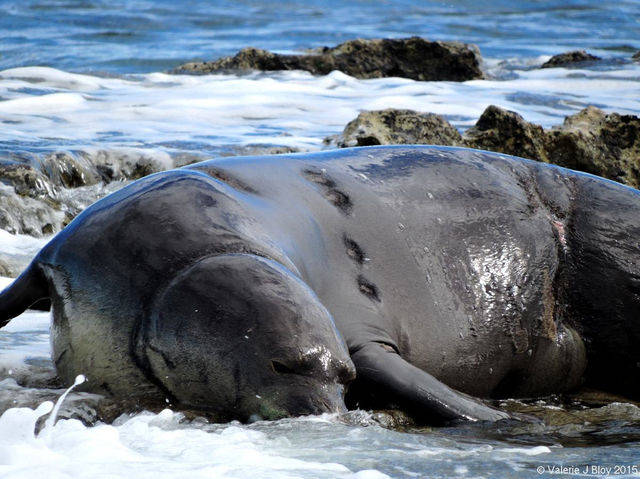LIHUE — Officials are throwing the spotlight on marine law enforcement with a new report called StoryMap, detailing and mapping nine completed marine protection investigations in Hawaii.
The hope is these investigation stories will not only tout the National Oceanic and Atmospheric Administration’s ability to stop animal harassment crimes, but to remind the public the rules are there for a reason.
Three of the nine cases are on Kauai, and they all involve monk seals. Other cases involve green sea turtles and humpback whales, as well as spinner dolphins and smuggling.
The nine cases on display in an interactive NOAA map are completed investigations, according to Jolene Lau, NOAA Fisheries communications specialist.
“We plan on adding more stories to the story map as our Office of Law Enforcement completes investigations,” Lau said. “In addition to the story map, we have a matching web story linking our social media posts about these completed cases.”
On Kauai, three enforcements are detailed, starting with the 2009 shooting and death of a pregnant Hawaiian Monk Seal.
After NOAA Office of Law Enforcement (OLE) investigation, Charles Vidinha pleaded guilty and received a 90-day prison sentence and a $25 fee.
Right after that ruling, Hawaii’s legislature made harassing, harming or killing a Hawaiian monk seal a class C felony with a penalty of up to a $50,000 fine and five years in prison.
The other two Kauai cases highlighted are from 2017, when in June Shylo Akuha was sentenced to four years in prison after being found guilty of harassment of a monk seal.
Police reports say Akuna was found repeatedly punching a pregnant monk seal, an act captured by video on social media.
The last Kauai incident detailed is that of an Alabama resident who recorded himself touching a sleeping monk seal on Kauai and posted it on social media. In another video the man harassed a sea turtle in the water.
NOAA OLE tracked him to his home state and fined the man $1,500 for the activities.
Incidents on Oahu involve fines for swimming with spinner dolphins and the 2014 exposure of a conspiracy ring to illegally smuggle carvings and jewelry made from protected species parts into the country.
Maui and Hawaii Island cases involve humpback whales, spinner dolphins and sea turtles.
Hawaii is known as the “endangered species capitol of the world” and is home to more than 300 species of plants and animals considered endangered or threatened, and many of them are endemic.
State and federal rules lay down the line for how people can interact with endangered animals, like the Hawaiian monk seals — with the rule of thumb being not to take the animals out of their natural habitat or disturb the animal’s natural behavior.
NOAA and the state’s Department of Land and Natural Resources mandate staying at least 150 feet away from marine mammals and turtles and the federal Marine Mammal Protection Act mandates a 100-yard no-go zone around humpback whales.
NOAA Fisheries responds to endangered animal harassment cases along with state and local agencies, and officials said the hope for the enforcement StoryMap is to spread information and encourage responsibility around endangered animals.
“While the agency prefers to educate the public about these animals to prevent incidents from occurring in the first place, NOAA OLE will step in to enforce the laws when education isn’t enough,” officials said in a release about StoryMap.
Anyone who witness harassment of protected marine animals can report it to NOAA’s Office of Law Enforcement at 800-853-1964 or email RespectWildlife@noaa.gov. To report a marine animal in distress, call NOAA’s hotline at 888-256-9840.
•••
Jessica Else, environment reporter, can be reached at 245-0452 or at jelse@thegardenisland.com




good article as educating folks about the law is important, as we need to take responsibility for our thinking and actions,